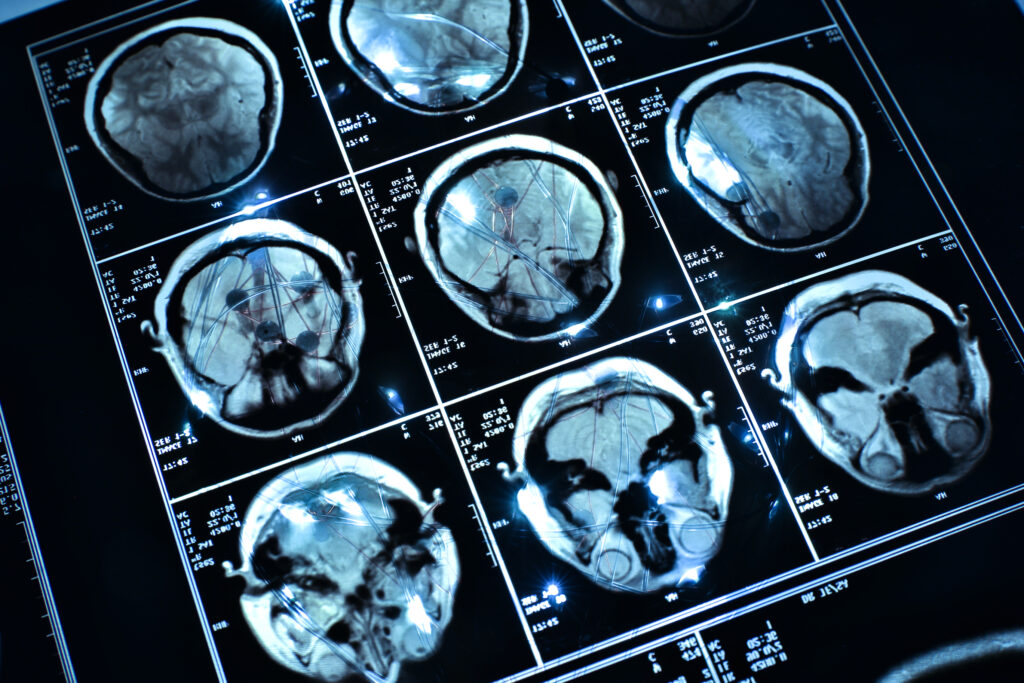Substance Abuse & Schizophrenia
Introduction
The purpose of this paper is to identify and outline the developmental stages and process of schizophrenia in individuals who also suffer from substance abuse. It is worth investigating schizophrenia and Substance Use Disorder (SUDs) together as they possess incredible comorbidity. It is also clear that earlier experiences in life which involve substance abuse for an individual suffering from schizophrenia are more influential in the potential development of SUDs. Additionally, there are legitimate defects in the brain which can contribute higher risk factors for schizophrenia, and thus also SUDs as a subsidiary.

This research is important to the field of schizophrenia and substance abuse because it helps establish a direct link between these two disorders. It highlights these two disorders’ ability to amplify one another. In addition, the more research, aggregation of data, and analysis of studies revolving around these two disorders together, the greater the likelihood of establishing effective treatment plans in patients suffering from these ailments. Although there are many contributing factors in the development of Substance Use Disorders (SUDs), there are clear suggestions and a complex of empirical data which indicates an individual suffering schizophrenia is at far greater risk. Furthermore, existing research also shows intervention and prevention as reasonably plausible.
Schizophrenia and Substance Use Disorders Comorbidity
Schizophrenia and Substance Use Disorders share strong comorbidity. Many studies have provided empirical proof that the two disorders are so comorbid they encourage one another (Volkow, 2009). In fact, SUDs is the most prevalent comorbidity disorder in individuals suffering from schizophrenia (Wobrock and Soyka, 2008). Schizophrenia and SUDs share a plethora of risk factors (Bennett et al., 2001). Many treatment plans which benefit SUDs patients also benefit schizophrenic patients suffering from SUDs, supporting the idea that the illnesses share many common foundations (2008). There is still a significant lack of data in terms of having enough information about patients suffering from both disorders; But some pharmaceutical treatments have already proven effective for helping patients suffering both ailments (2008).
Schizophrenia and SUDs are commonly compared and associated, but less commonly investigated in relation to one another (Fleischhacker, 2017). Many professionals tend to treat only one of the two disorders when they exist simultaneously in an individual (2017). Many treatment plans for one of the two disorders when they exist simultaneously in an individual comes at the expense of the other (2017). It has been suggested that the two disorders share common neurobiological pathways, including the dopamine-mediated mesolimbic cortex (2017).
While many times one of the two disorders may be overlooked in the diagnosis phase, it reasonable to suggest some treatments may still resolve or manage both disorders simply out of convenience and sheer luck. Additionally, it is plausible to assume some of the effects an individual suffers from one of the disorders going undiagnosed alongside treatment for the other could be mistaken for side effects of the treatment plan (Koskinen et al., 2009). Still, despite the comorbidity of the two disorders (and partly due to the comorbidity itself), they are commonly treated separately, and thus less investigated together (2009). In the simplest sense, uncannily similar risk factors can make it difficult for a professional to differentiate between causes and effects in behavior in a schizophrenic or SUDs patient (Wobrock and Soyka, 2008). Furthermore, schizophrenia and SUDs frequently feed off one another, making normal diagnostic and treatment models which are effective for the less-impaired, general population of either disorder by itself less successful (Bennett et al., 2001).
Early-life Substance Abuse in Schizophrenics and the Development of SUDs

Early-life substance abuse has been shown to dramatically increase the potential development of Substance Use Disorders in an individual with schizophrenia. Parental factors during the developmental stages of early life can play a large impact on the likelihood an individual will adopt alcohol or substance abuse as a coping mechanism (Swartz et al., 2006). Children with parents who drink or suffer from substance abuse are far more likely to develop an addiction themselves, especially if the child suffers another mental deficit (Martikainen et al., 2018). Many studies have indicated a link between early substance abuse (of any kind) and the increased probability an individual will develop schizophrenia (Nielsen et al., 2017). Additional factors in early life, such as family life, gender, socio-economic status, and psychiatric history may contribute to the likelihood the two disorders will become co-prevalent in an individual (2017).
It has been suggested that even possessing susceptible genes along with exposure to other risk factors, may increase the likelihood of an individual with schizophrenia developing SUDs (Gyllenburg et al., 2020). A family history of schizophrenia also imposes a higher probability that an individual may develop schizophrenia or substance use disorder [or both] (2020). Maternal factors, such as diet and life style choices during pregnancy, play a large part in the increased probability of developing schizophrenia or SUDs (2020). Additionally, familial liabilities exist for increasing the likelihood of developing either disorder (2020). There are some neurocognitive similarities in individuals with schizophrenia and SUDs tendencies. These neurocognitive similarities for dependence can be identified and tracked as they develop (Peer et al., 2009).
Light alcohol or drug use early in life has been shown to encourage a stronger likelihood of addiction in the neurodevelopmental model of schizophrenia (Naassila, 2015). The current statistics on the probability mentally ill individuals will adopt SUDs in their lifetime is already high, but the susceptibility rate is much higher earlier in life (Drake and Wallach, 1989). Unfortunately, the addiction development pattern is more prevalent for schizophrenics, and thus they are also significantly more likely to utilize addictions like alcohol and drugs as a coping mechanism early in life (Koskinen et al., 2009). Many other environmental and demographic factors can contribute to the likelihood an individual may abuse substances at an earlier age, increasing the chances of developing schizophrenia and SUDs alike (Gyllenburg et al., 2020). Some other factors which contribute to the likelihood of SUDs or schizophrenia include early experiences emotional or physical trauma (especially violence) in an early-life household (Moring, 1998).
Defects in Brain Development as Predictors
Defects in brain development can predict the development of both disorders. Some factors exist which create a more susceptible neural system, posing a greater risk for the development of many mental disorders, including schizophrenia (Khokhar et al., 2018). The more frequently a susceptible neural system is introduced to substance use, the greater the chances the individual will develop schizophrenia or SUDs (2018). The lack of certain neurotransmitter function is directly linked to many of the symptoms present throughout schizophrenia and SUDs (Brisch et al., 2014). Additionally, certain complications or delayed attainment of developmental milestones can indicate a predisposition for schizophrenia and SUDs (Gyllenburg et al., 2020).
Some studies have suggested the early onset of substance abuse can have a direct impact on an individual developing psychosis or schizophrenia (Addington and Addington, 1998). The increase in negative symptoms caused by substance abuse could explain the increased probability of schizophrenia. This connection between early substance abuse and the development of schizophrenia is so strong that some psychologists suggest a pre-diagnosed treatment for schizophrenia (1998). It could be suggested that pre-diagnosed treatment for schizophrenia could easily be used to stunt further development of both disorders at the same time.
Some professionals suggest regular assessment of the brain circuitry of an adolescent exhibiting symptoms of substance abuse or psychotic symptoms may be able to identify a more direct link between schizophrenia and SUDs (Khokhar et al., 2018). This could be because there are many parallels which can be drawn between substance abuse and fundamental brain development (Hamlyn et al., 2013). And since schizophrenia and substance use disorders very commonly coexist, it would not be unreasonable to suggest pre-diagnosis could be far more common with early investigation. In fact, the same can be true for schizophrenia and other SUDs-encouraging challenges which typically coexist, such as depression (Pescosolido et al., 2010).

Some medical professionals have suggested certainty in the dysfunction of the dopamine-mediated brain reward system among patients suffering both schizophrenia and SUDs (Green et al., 2008). Many studies exist which show that the dopamine reward system is defunct in individuals who suffer schizophrenia and substance abuse (Forti et al., 2007). Schizophrenics suffer many abnormalities in the mesolimbic and prefrontal regions of the brain, responsible for dopamine interactions (Brisch, et al., 2014). Furthermore, it is probable there are many neurobiological formulations which could offer effective treatment methods for patients afflicted by both disorders (2008).
Conclusion
Many factors are possible constituents in the development of Substance Use Disorders (SUDs). A lexicon of studies and empirical data exist which support the idea that individuals with schizophrenia are far more likely to fall victim to SUDs. Schizophrenia and SUDs share a critically high comorbidity. Falling victim to substance abuse earlier in life has been proven to be a severe risk factor in the development of SUDs in an individual with schizophrenia. And certain brain development defects can predict the development of schizophrenia and SUDs within reasonable accuracy (Khokhar et al., 2018). It is also worth noting that there are many intervention and treatment plans which can be extremely effective when implemented early on. Many studies support early intervention as one of the most appropriate strategies for schizophrenic individuals exhibiting substance abuse behavior (Hsieh, 2002).
References
Addington J. and Addington D., (1998). Effect of substance misuse in early psychosis. Psychiatry Suppl.. Vol. 172(33). Pp. 134-6. PMID: 9764140.
Bennett, M., Bellack, A., Gearon, J., (2001). Treating substance abuse in schizophrenia: An initial report. Journal of Substance Abuse Treatment. Vol. 20(2), Pp. 163-175. DOI: https://doi.org/10.1016/S0740-5472(00)00167-7.
Brisch, R., Arthur, S., Rainer, W., Hendrik, B., Hans-Gert, B., Johann, S., Zbigniew, J., Jaliya, K., Maciej, H., and Tomasz, G., (2014). The Role of Dopamine in Schizophrenia from a Neurobiological and Evolutionary Perspective: Old Fashioned, but Still in Vogue. Frontiers in Psychiatry. Vol. (5). Pp. 47. DOI: 10.3389/fpsyt.2014.00047
Drake, R. and Wallach, M., (1989). Substance abuse among the chronic mentally ill. Hosp Community Psychiatry. Vol. 40(10). Pp. 1041-6. DOI: 10.1176/ps.40.10.1041. PMID: 2807205.
Fleischhacker, W. (2017). Schizophrenia and substance abuse. Current Opinion in Psychiatry. Vol. 30(3), 169–170. https://doi.org/10.1097/YCO.0000000000000328
Forti, M., Lappin, J., and Murray, R., (2007). Risk factors for schizophrenia — All roads lead to dopamine. European Neuropsychopharmacology. Vol. 17(2). Pp. S101-S107. DOI:
https://doi.org/10.1016/j.euroneuro.2007.02.005.
Green, A., Noordsy, D., Brunette, M., and O’Keefe, C., (2008). Substance abuse and schizophrenia: Pharmacotherapeutic intervention. Journal of Substance Abuse Treatment. Vol. 34(1), Pp. 61-71. DOI: https://doi.org/10.1016/j.jsat.2007.01.008.
Gyllenberg, D., McKeague, I., Sourander, A., and Brown, A., (2020). Robust data‐driven identification of risk factors and their interactions: A simulation and a study of parental and demographic risk factors for schizophrenia. Int J Methods Psychiatr Res.. Vol. 29(e1834). DOI: https://doi-org.ezproxy.liberty.edu/10.1002/mpr.1834
Hamlyn, J., Duhig, M., McGrath, J., and Scott, J., (2013). Modifiable risk factors for schizophrenia and autism — Shared risk factors impacting on brain development. Neurobiology of Disease. Vol. 53. Pp. 3-9. DOI: https://doi.org/10.1016/j.nbd.2012.10.023.
Hsieh, W. (2002). Olanzapine Treatment for Patients With Schizophrenia and Cocaine Abuse. The Journal of Clinical Psychiatry. Vol. 63(12). Pp. 1180–1181. DOI: https://doi.org/10.4088/JCP.v63n1214c
Khokhar, J., Dwiel, L., Henricks, A., Doucette, W., Green A., (2018). The link between schizophrenia and substance use disorder: A unifying hypothesis. Schizophr Res.. Vol. 194. Pp. 78-85. DOI: 10.1016/j.schres.2017.04.016. Epub 2017 Apr 14. PMID: 28416205; PMCID: PMC6094954.
Koskinen, J., Löhönen, J., Koponen, H., Isohanni, M. and Miettunen, J. (2009), Prevalence of alcohol use disorders in schizophrenia – a systematic review and meta‐analysis. Acta Psychiatrica Scandinavica, Vol. 120. Pp. 85-96. DOI: https://doi-org.ezproxy.liberty.edu/10.1111/j.1600-0447.2009.01385.x
Martikainen, P., Korhonen, K., Moustgaard, H., Aaltonen, M., and Remes, H., (2018). Substance abuse in parents and subsequent risk of offspring psychiatric morbidity in late adolescence and early adulthood: A longitudinal analysis of siblings and their parents. Soc Sci Med.. Vol. 217. Pp. 106-111. DOI: 10.1016/j.socscimed.2018.09.060.
Moring, J. (1998). Schizophrenia, Alcohol Abuse, and Violent Behavior: A 26-Year Followup Study of an Unselected Birth Cohort. Schizophrenia Bulletin. Vol. 24(3). Pp. 437–441. DOI: https://doi.org/10.1093/oxfordjournals.schbul.a033338
Naassila, M. (2015). Light alcohol intake during adolescence induces alcohol addiction in a neurodevelopmental model of schizophrenia. Addiction Biology, Vol. 20(3). Pp. 490–499. https://doi.org/10.1111/adb.12146
Nielsen, S., Toftdahl, N., Nordentoft, M., and Hjorthøj, C., (2017). Association between alcohol, cannabis, and other illicit substance abuse and risk of developing schizophrenia: a nationwide population based register study. Psychol Med.. Vol. 47(9). Pp. 1668-1677. DOI: 10.1017/S0033291717000162. Epub 2017 Feb 7. PMID: 28166863.
Peer, J., Bennett, M., & Bellack, A., (2009). Neurocognitive Characteristics of Individuals With Schizophrenia and Cocaine Dependence: Comparison of Currently Dependent and Remitted Groups. Journal of Nervous & Mental Disease. Vol. 197. Pp. 631-634. DOI: https://doi.org/10.1097/NMD.0b013e3181b08bf4
Pescosolido, B., Martin, J., Long, J., Medina, T., Phelan, J., and G. B., (2010). “A Disease Like Any Other”? A Decade of Change in Public Reactions to Schizophrenia, Depression, and Alcohol Dependence. American Journal of Psychiatry. Vol. 167(11). Pp. 1321-1330. DOI: https://doi.org/10.1176/appi.ajp.2010.09121743
Swartz, Marvin, Wagner, H, Swanson, Jeffrey, Stroup, T, Scott MD, MPH, McEvoy, Joseph, et al. (2006). Substance Use in Persons With Schizophrenia: Baseline Prevalence and Correlates From the NIMH CATIE Study. Journal of Nervous & Mental Disease. Vol. 194. Pp. 164-172. DOI: https://doi.org/10.1097/01.nmd.0000202575.79453.6e
Volkow N. D. (2009). Substance use disorders in schizophrenia–clinical implications of comorbidity. Schizophrenia Bulletin. Vol. 35(3). Pp. 469–472. DOI: https://doi.org/10.1093/schbul/sbp016
Wobrock, T., Soyka, M., (2008). Pharmacotherapy of schizophrenia with comorbid substance use disorder — Reviewing the evidence and clinical recommendations. Progress in Neuro-Psychopharmacology and Biological Psychiatry. Vol. 32(6). Pp. 1375-1385. DOI: https://doi.org/10.1016/j.pnpbp.2008.02.008.




